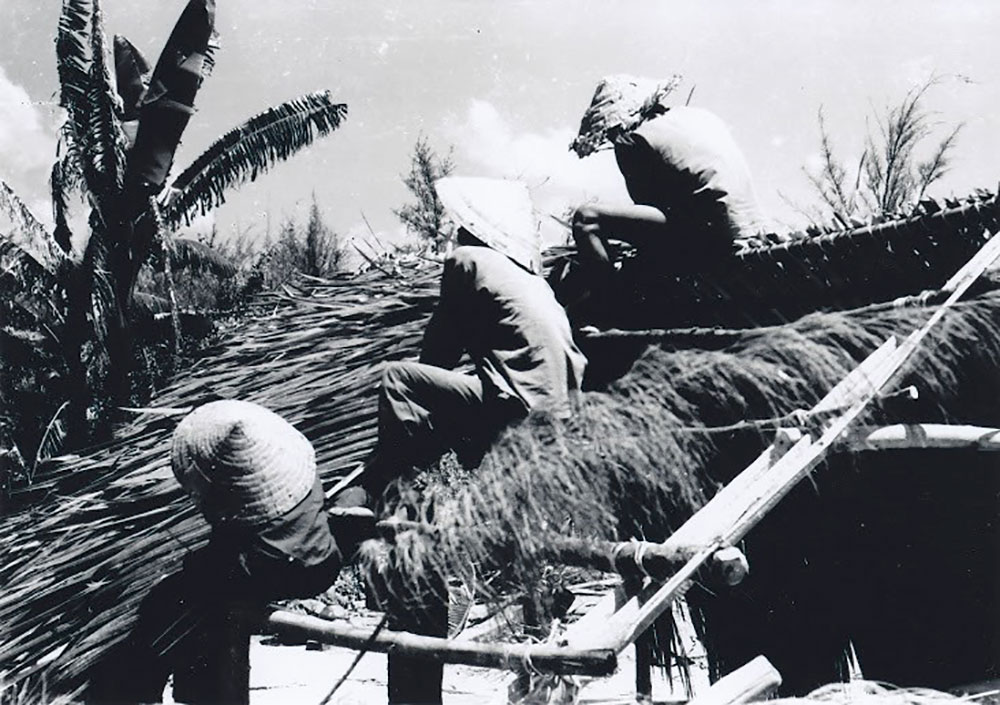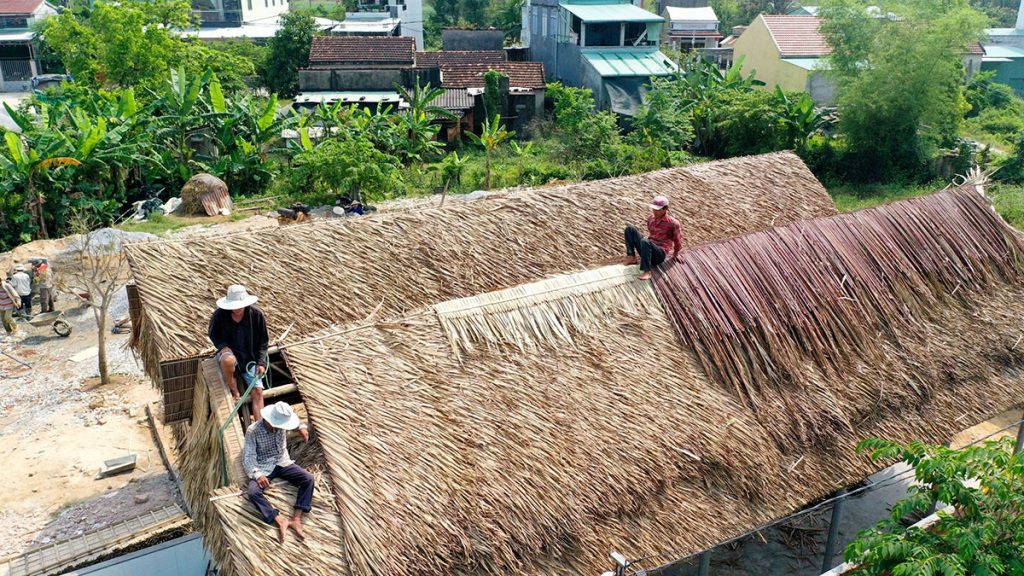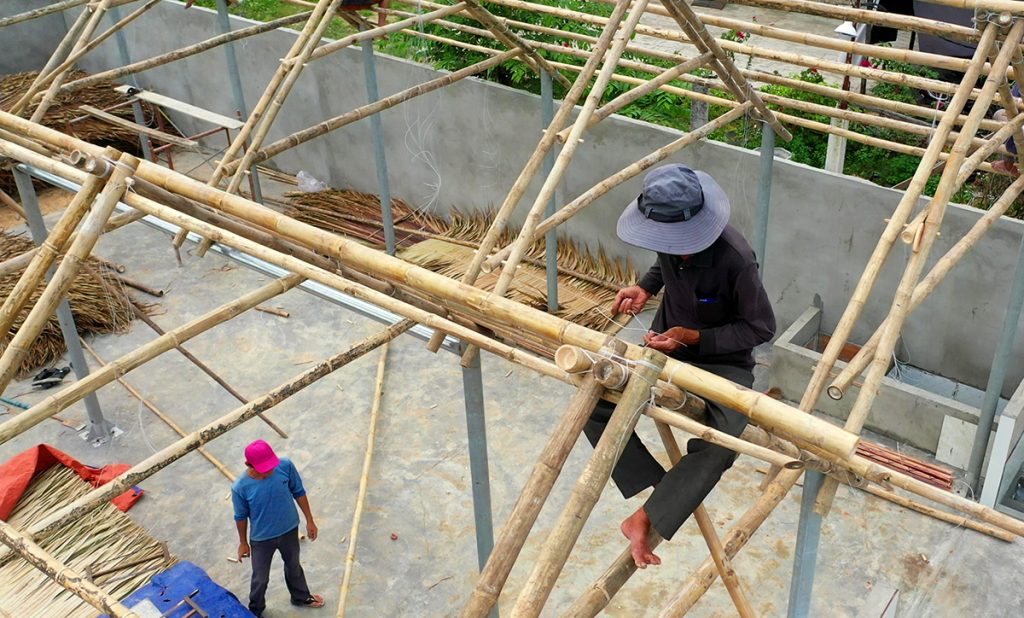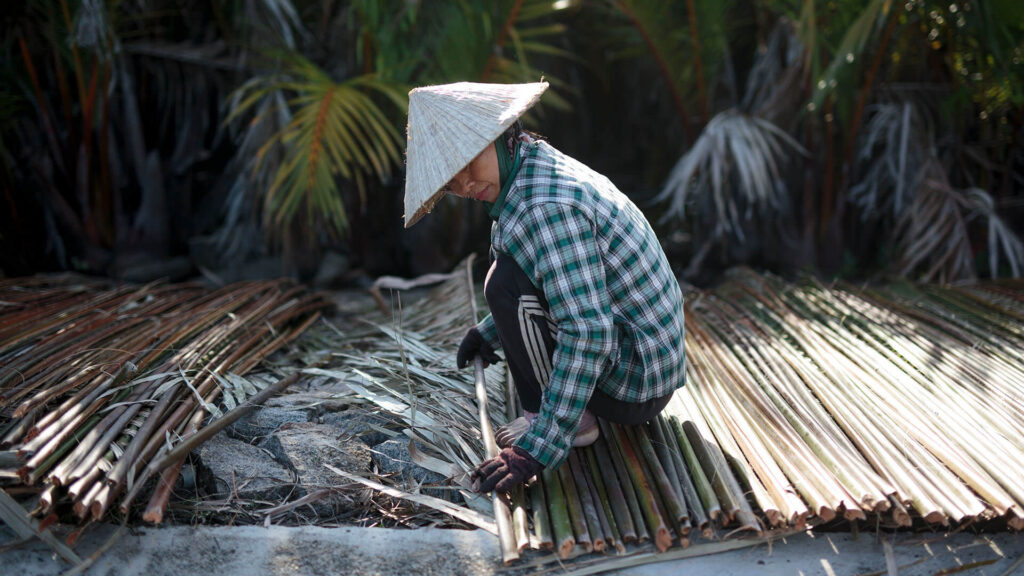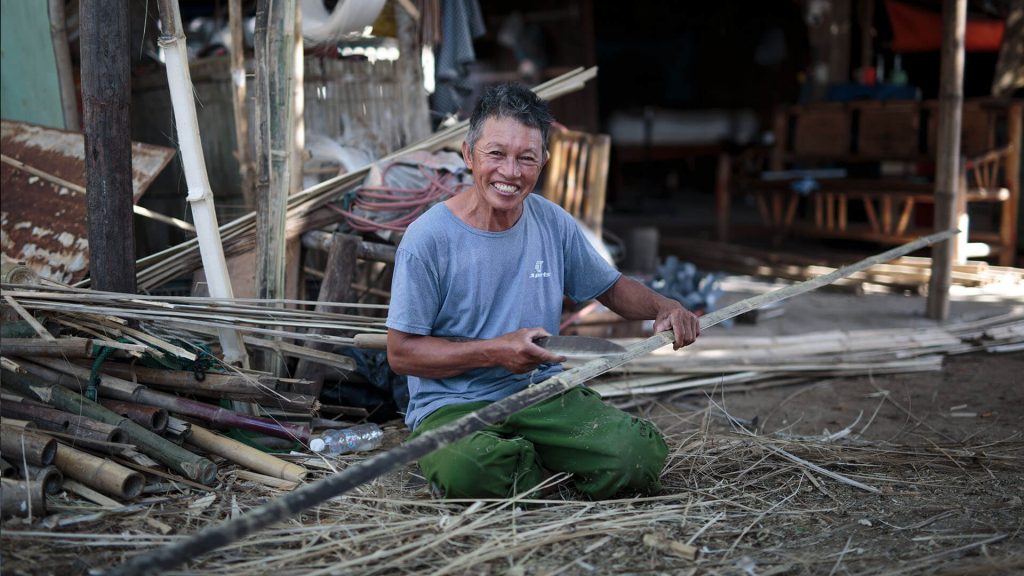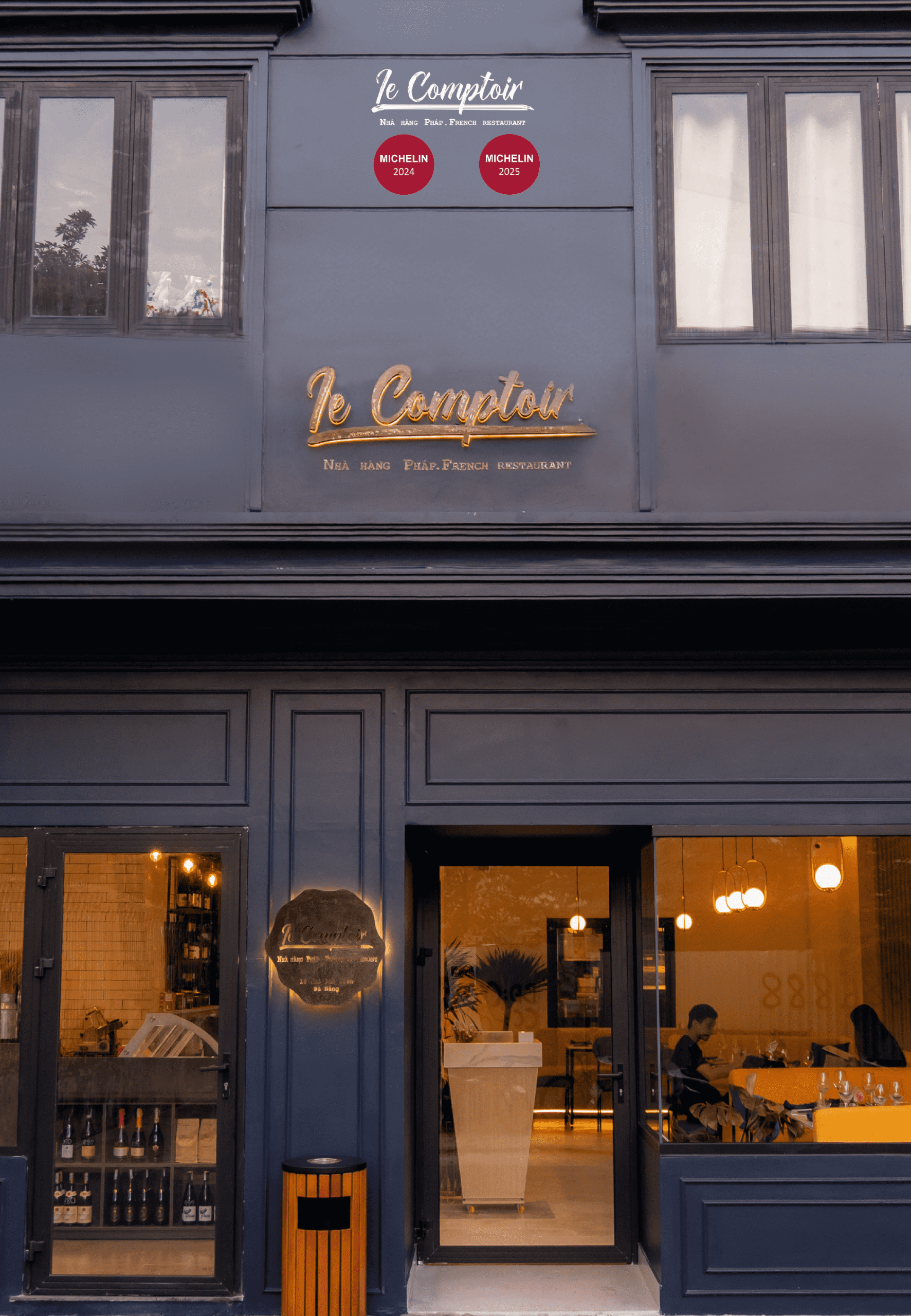Nestled on the southeastern edge of Hội An, Cẩm Thanh’s nipa palm forest stands as a rare natural and cultural treasure. Beyond its ecological importance, this mangrove landscape embodies centuries of adaptation, craftsmanship, and harmony between humans and nature. From the lush palms and abundant bamboo that thrive in this delta region, the people of Cẩm Thanh have long crafted a distinct architectural tradition the coconut-bamboo house, a structure that speaks to resilience, sustainability, and artistry.
A Heritage Rooted in Nature and Ingenuity
For generations, local artisans have used nipa palm leaves and bamboo materials available in abundance to build homes, furniture, and later, fine handicrafts for trade. This practice gave rise to the traditional craft of coconut-bamboo housebuilding, a symbol of adaptation to the natural environment and sustainable living.
Each structure reflects the ingenuity of its makers, who learned to build durable, storm-resistant homes entirely by hand. Without the use of modern chemicals or machinery, they rely on ancestral knowledge, passed down through oral tradition and practice. Every connection from pillars to rafters is bound using rattan or fishing line, materials valued for their tensile strength and flexibility against the fierce coastal winds of Central Vietnam.
Traditional Architecture and Craftsmanship
A traditional coconut-bamboo house, whether three or five compartments wide, with or without wings, is composed of two main systems:
- A bamboo framework serving as the load-bearing skeleton (including columns, beams, and rafters), and
- An enclosure system of nipa palm panels forming the roof, walls, and doors.
Building such a home requires not only technical skill but also deep understanding of structure, scale, and proportion. Craftsmen carefully select aged bamboo for strength and balance, while nipa palm leaves meticulously dried, soaked, and woven are used for roofing and wall panels. When treated through prolonged immersion in water and mud, these natural materials become remarkably resistant to insects and humidity, ensuring the homes remain cool, dry, and enduring.
Diversity of Design and Evolution Over Time
In the past, homes typically followed a simple layout of three chambers, two porches, and a kitchen. Today, responding to tourism and modern needs, local artisans have expanded their creativity to include a wide range of styles from ethnic stilt houses and Thai-inspired bungalows to open-air pavilions and eco-lodges. These structures, while contemporary in use, retain the traditional soul of Cẩm Thanh’s craft.
In each home, bamboo provides the sturdy frame, while palm leaves form the protective layers. Rattan and nylon cords tie the elements together. The precision and harmony in this manual process highlight both technical mastery and aesthetic sensibility the essence of Vietnamese vernacular architecture.
A Forest that Shelters History and Sustains Life
The Cẩm Thanh nipa palm forest, spanning over 106 hectares, is often referred to by locals as the “Bảy Mẫu Coconut Forest.” Its lush greenery not only moderates the climate and shields against floods but also provides the raw materials that sustain the local craft industry. Historically, this forest also played a heroic role it served as a revolutionary base during the wars, most notably in the September 1964 uprising. Thus, the forest is both a natural sanctuary and a monument of resistance.
Craftsmanship: From Housebuilding to Handicrafts
Today, alongside housebuilding, local artisans have diversified into producing bamboo handicrafts such as chairs, tables, cabinets, and home décor. Initially made for personal use, these products have become sought-after souvenirs and export goods. Workshops like those of Võ Tấn Tân, Huỳnh Phước Đức, and Phan Mót now serve as cultural attractions, showcasing over 40 varieties of handcrafted items that embody both tradition and modern design.
The Cẩm Thanh coconut-bamboo house has become more than a dwelling it is a statement of aesthetic and environmental consciousness. These houses now grace eco-resorts, beachfront villas, and homestays throughout Central Vietnam, admired for their rustic charm and ecological value. The craft has also been officially recognized as a National Intangible Cultural Heritage by Vietnam’s Ministry of Culture, Sports and Tourism in Decision No. 380/QĐ-BVHTTDL dated February 21, 2024.
Cẩm Thanh: Where Rivers, Culture, and Craft Intertwine
Historically known as Thanh Châu Village under the feudal system, Cẩm Thanh occupies a unique geographical position southeast of Hội An’s Ancient Town, surrounded by rivers and waterways the Thu Bồn, Ba Chươm, and Đò Rivers. Its fertile alluvial soil and abundant water channels create an ideal environment for mangrove palms and bamboo to flourish. The area’s scenic river islets and dense groves, such as Thuận Tình, Cồn Ông Hơi, and Cồn Tiến, offer a picturesque landscape now cherished by ecotourism ventures.
Over centuries, despite the devastation of wars, Cẩm Thanh has preserved a remarkable cultural legacy from archaeological and historical relics to intangible traditions, rituals, and festivals. Alongside its famed yến sào (bird’s nest) harvesting, the craft of coconut-bamboo housebuilding stands as one of its proudest achievements.
A Living Tradition for the Future
With its deep connection to the land and water, Cẩm Thanh’s traditional craft embodies sustainability and cultural identity. What began as a simple means of building shelter has evolved into an art form that blends function, beauty, and heritage. The revival of this craft not only sustains livelihoods but also preserves a unique cultural landscape one that continues to inspire both locals and visitors alike.
Today, as the demand for eco-friendly and culturally authentic architecture grows, the coconut-bamboo house of Cẩm Thanh represents Vietnam’s creative response to modernity: a living heritage where tradition breathes new life into the future.




